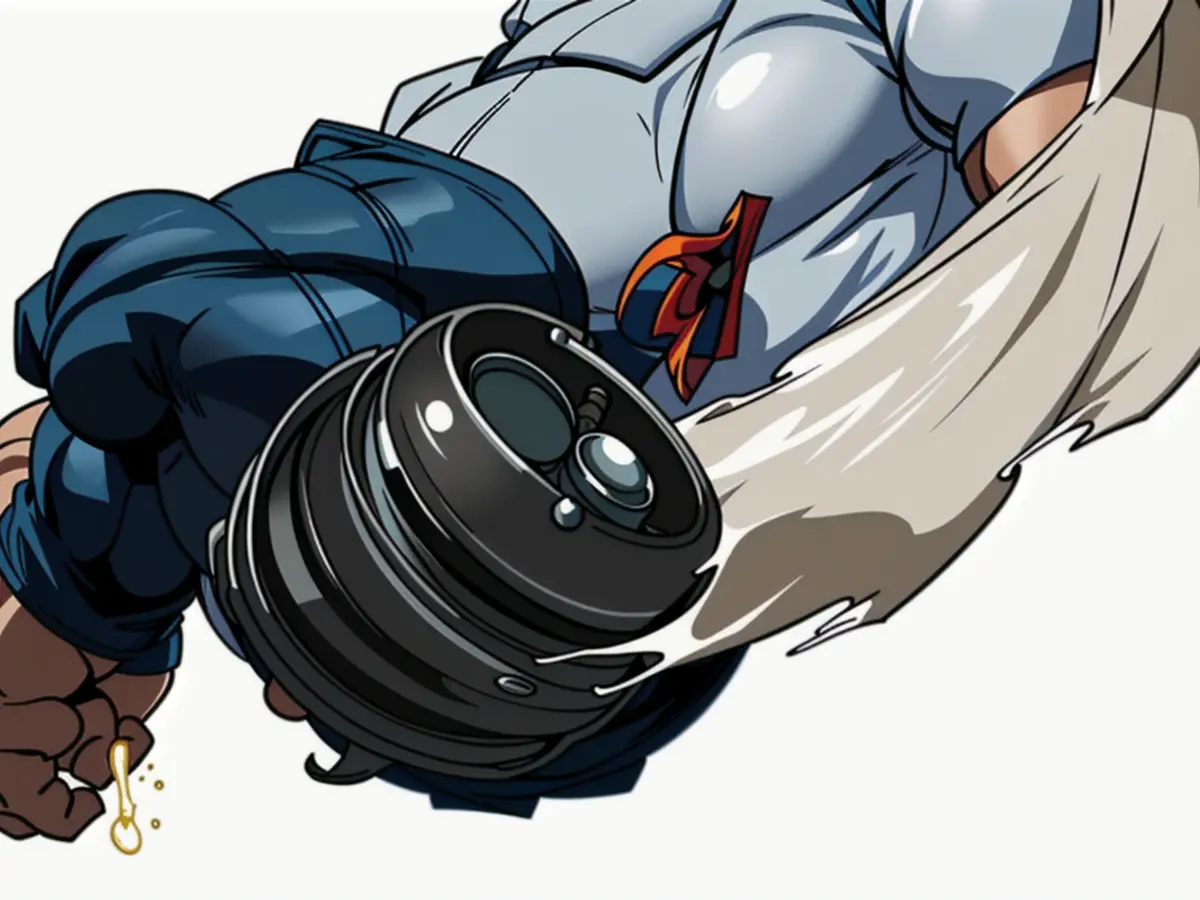Mastering Rack Pulls: Comprehensive Tutorial for this Powerful Lifting Technique
Lift like a boss with the rack pull, a killer compound exercise that works wonders for your upper and lower bod. Need a muscle boost? The rack pull is your pal. Struggling with pull or grip strength? It's here to help.
New to this deadlift variation? Let's dive in!
What's a rack pull?
The rack pull involves hoisting a barbell stuck in a power rack (the big rectangular thing at the gym). You'll start with the bar just below your knees, hinge your hips to raise it. This baby not only boosts your pull and grip strength but also works your glutes, hams, back, lats, traps, quads, and forearms.
Master the art of rack pulling
Gym equipment in place? Check. Barbell ready? Check. Now, follow these steps:
- Set the rack supports at your knee level (or thereabouts).
- Place the barbell on the rack supports, add weights. Start small, go big later.
- Stand shoulder-width apart, bend your knees slightly, and hinge your hips forward.
- Grab the bar with a grip just outside shoulder-width. Double-overhand or alternating, your call.
- Squeeze your shoulder blades together, shift the weight onto your hamstrings.
- Slowly and steady, lift the barbell to fully extended hips. Keep your back neutral.
- Once down, repeat.
5 reasons why rack pulls rule
Rack pulls can change your life (or at least your gym sessions) in many ways. From improving athletic performance to making housework a breeze!
Here's the deets:
1. Enhance your grip and pull strength
Consistent rack pulls can bring major gains in grip and pull strength, which isn't just gym-brag-worthy - it's a crucial health indicator associated with a better quality of life in older age[6][7].
2. Slash the injury risk
The traditional deadlift involves a huge range of motion with heavy weight, making it risky if you don't have perfect form[8]. The rack pull, on the other hand, is a safer choice due to the reduced stress on the spine compared to the full deadlift, as it's performed with an upright posture[8][9].
3. Get that muscle growth
The rack pull works your posterior chain (the group of muscles including your glutes, hamstrings, lats, and upper back)[10]. This means notable improvements in strength and growth in these muscles, important factors for boosting athletic performance[11][12].
4. Bump up your weight
Experienced lifters might find they can lift more with rack pulls thanks to the shorter range of motion[8]. So if you're stuck in a strength plateau, rack pulls could be your golden ticket to breakthrough.
5. Suited for both newbies and pros
Whether you're a gym novice or an epic lifter, the versatile rack pull will help everyone get stronger and more powerful[8].
Let's rack pull like pros (without the usual oopsies)
Stay safe while getting strong! Follow these tips to lower your risk of injury, pain, or strain:
- Maintain a neutral spine. Avoid overextending your back.
- Lift slowly and controlled. Don't rush; it's dangerous.
- Grip with your palms. Using fingers can make your grip less secure, risking the weight slipping.
- Watch those knees. When putting back the bar, be gentle; don't bang your kneecaps.
- Take it easy. Gradually increase weight over time, and start with baby steps until you build strength and confidence.
- Rep-it-up. Gradually build your reps and sets as you grow stronger and more comfortable with the lift. If you have a back injury, talk to a physical therapist or doctor before attempting rack pulls.
Bored with the regular rack pull? Try these 3 variations!
1. Block pull
If you're missing the rack, try block pulls, using blocks or bumper plates to elevate the barbell. Simply stack them to your desired height, perform just like a rack pull.
2. Reverse band rack pull
This move targets legs, glutes, and back. You'll need a band to do it, great for powerlifters or good for everyone.
- Load the bar, attach the band to the top of the rack pegs or rack itself.
- Stand with feet hip-width apart, barbell over your feet.
- Push your hips back, hinge forward, grab the bar.
- Pull up on the bar as your hips drop, imagine squeezing tennis balls in your armpits over the bar.
- Drive through your feet as you extend your knees and hips.
- Repeat for 2-3 sets of 4-6 reps.
3. Isometric rack pull
Perfect for those recovering from injuries or dealing with pain while doing traditional deadlifts or rack pulls. Since it puts less pressure on your back and hips, it's a good reintroduction to lifting without the added stress.
- Set the barbell under a pair of safety stoppers, feel free to start with an empty barbell.
- Stand with your feet hip-width apart, hold the barbell over your feet with an overhand grip.
- Push your hips back, hinge forward, and pull the barbell swiftly into the pins.
- Repeat for several reps.
- The rack pull, an essential exercise for enhancing grip and pull strength, is a vital health indicator associated with a better quality of life in older age.
- By performing rack pulls, you can reduce the risk of injury during traditional deadlifts due to the reduced stress on the spine and the upright posture it requires.
- Experience notable improvements in strength and growth in your glutes, hamstrings, lats, and upper back with consistent rack pulls, which is crucial for boosting athletic performance.
- Experienced lifters might find that they can lift more with rack pulls thanks to the shorter range of motion, helping them break through strength plateaus.
- Rack pulls are suitable for both beginners and seasoned lifters, making it an exercise that helps everyone get stronger and more powerful.
- To ensure safe and effective rack pulls, remember to maintain a neutral spine, lift slowly and controlled, grip with your palms, watch your knees, take it easy when increasing weight, and gradually build your reps and sets over time.






